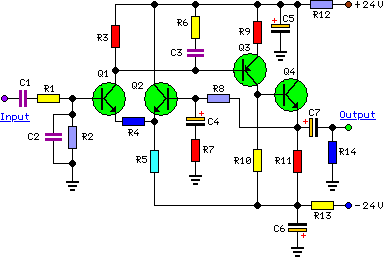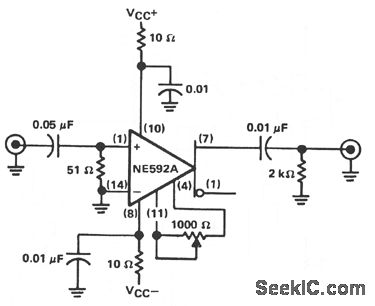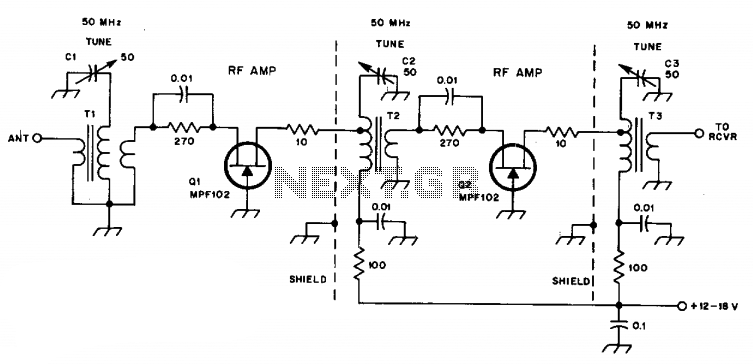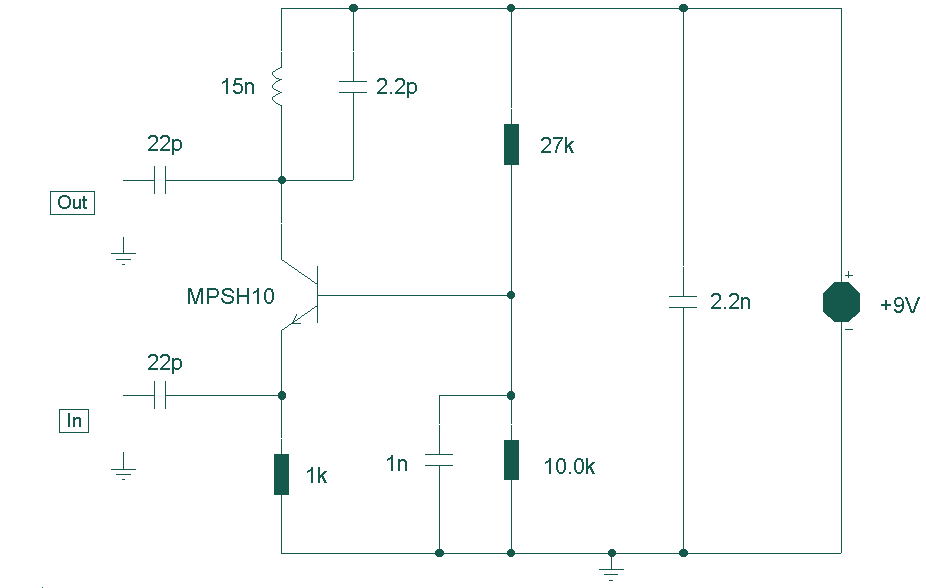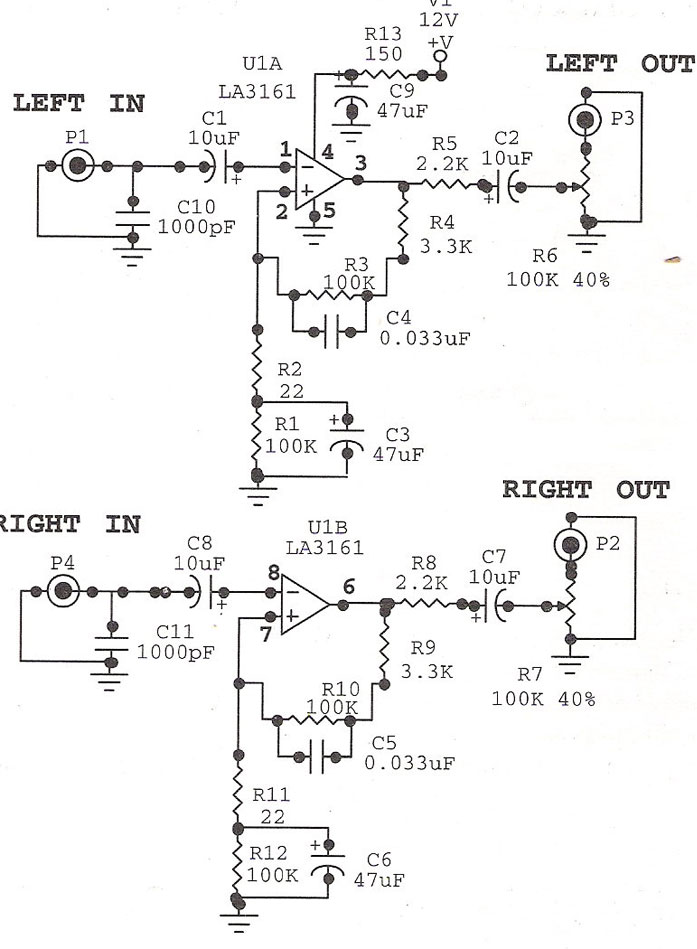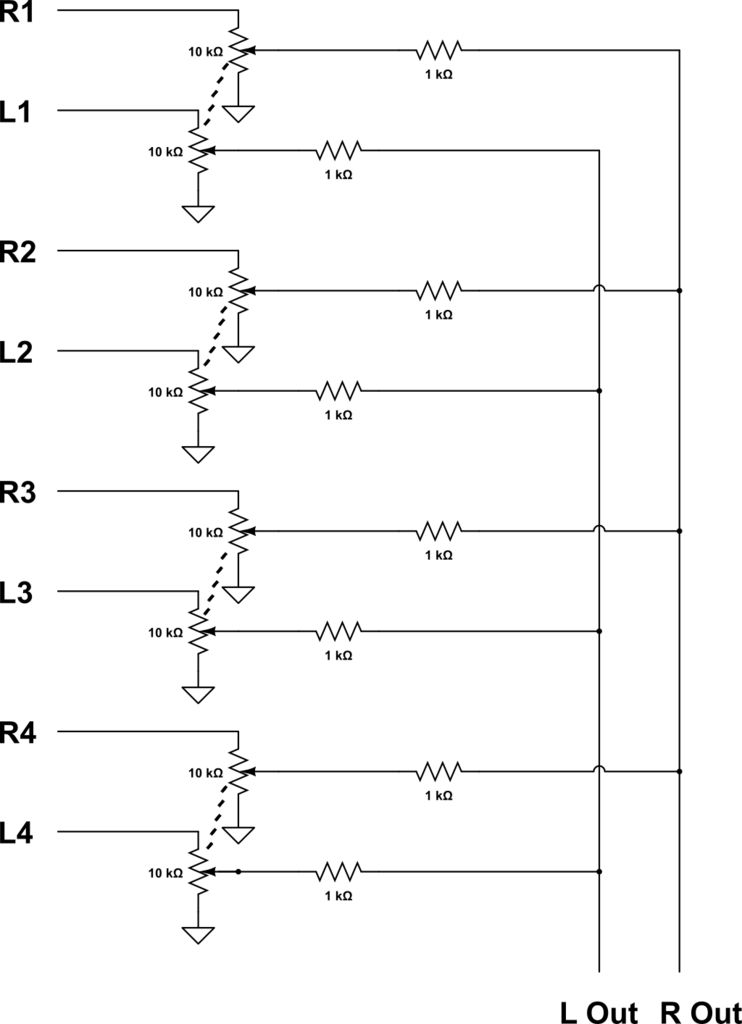
iPod Passive Preamplifier

Construct a basic passive preamplifier for use with an iPod, Zune, or other portable media players. This device is particularly useful for enhancing audio quality in a car environment.
A passive preamplifier is a circuit designed to amplify audio signals without the use of active components such as transistors or operational amplifiers. Instead, it relies on passive components like resistors, capacitors, and transformers to increase the signal level. This type of preamplifier is ideal for portable media players, as it can improve sound quality by providing a better impedance match between the media player and the car's audio system.
The basic design of a passive preamplifier involves connecting the output of the portable media player to the input of the preamplifier. A potentiometer can be included to allow for volume control, adjusting the signal level before it reaches the car's audio system. The output of the preamplifier is then connected to the car's auxiliary input or directly to the amplifier.
Key components in the circuit may include:
1. **Resistors**: Used to create voltage dividers for signal attenuation and to set input/output impedance levels.
2. **Capacitors**: Employed for coupling and decoupling signals, blocking DC while allowing AC audio signals to pass through.
3. **Potentiometer**: Serves as a variable resistor to adjust the audio signal level, providing user control over volume.
4. **Connectors**: RCA or 3.5mm jacks may be used for interfacing with the media player and the car audio system.
The circuit layout should ensure minimal signal loss and noise interference. Proper grounding and shielding techniques should be implemented to maintain audio fidelity. The passive nature of the preamplifier makes it a cost-effective solution for enhancing audio output without the need for an external power source, making it suitable for mobile applications.Build a simple passive preamplifier for your iPod, Zune or other portable media player. Great for the car. 🔗 External reference
A passive preamplifier is a circuit designed to amplify audio signals without the use of active components such as transistors or operational amplifiers. Instead, it relies on passive components like resistors, capacitors, and transformers to increase the signal level. This type of preamplifier is ideal for portable media players, as it can improve sound quality by providing a better impedance match between the media player and the car's audio system.
The basic design of a passive preamplifier involves connecting the output of the portable media player to the input of the preamplifier. A potentiometer can be included to allow for volume control, adjusting the signal level before it reaches the car's audio system. The output of the preamplifier is then connected to the car's auxiliary input or directly to the amplifier.
Key components in the circuit may include:
1. **Resistors**: Used to create voltage dividers for signal attenuation and to set input/output impedance levels.
2. **Capacitors**: Employed for coupling and decoupling signals, blocking DC while allowing AC audio signals to pass through.
3. **Potentiometer**: Serves as a variable resistor to adjust the audio signal level, providing user control over volume.
4. **Connectors**: RCA or 3.5mm jacks may be used for interfacing with the media player and the car audio system.
The circuit layout should ensure minimal signal loss and noise interference. Proper grounding and shielding techniques should be implemented to maintain audio fidelity. The passive nature of the preamplifier makes it a cost-effective solution for enhancing audio output without the need for an external power source, making it suitable for mobile applications.Build a simple passive preamplifier for your iPod, Zune or other portable media player. Great for the car. 🔗 External reference
